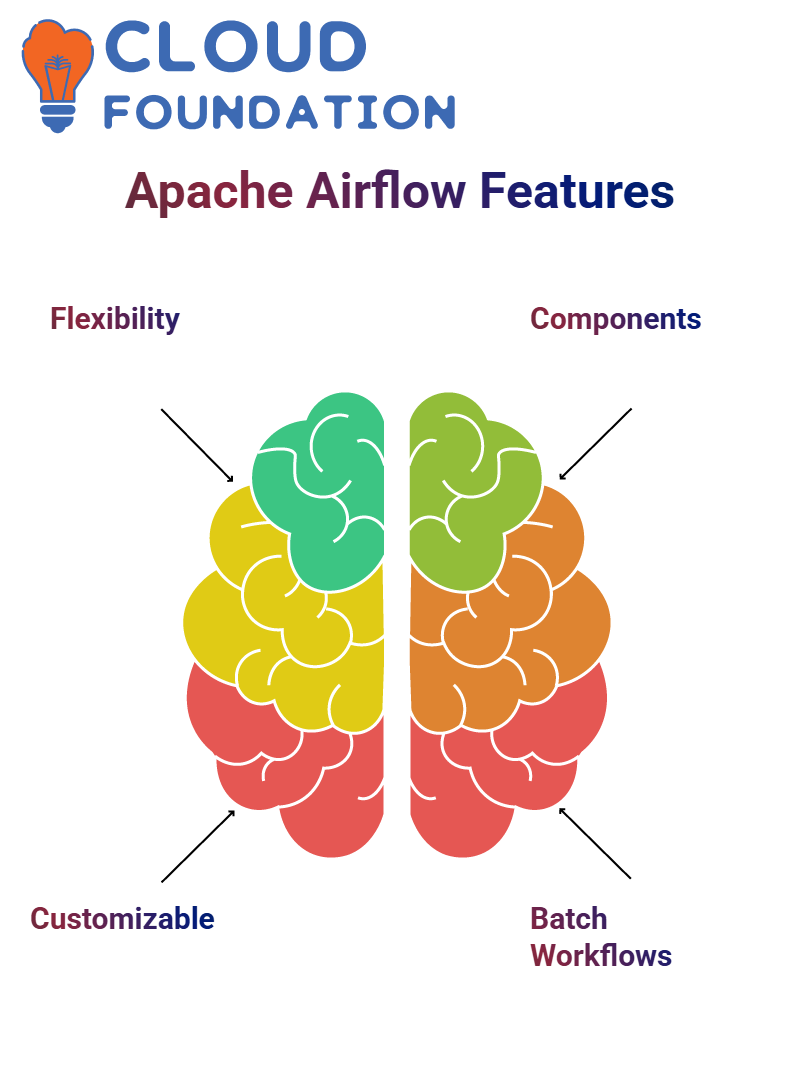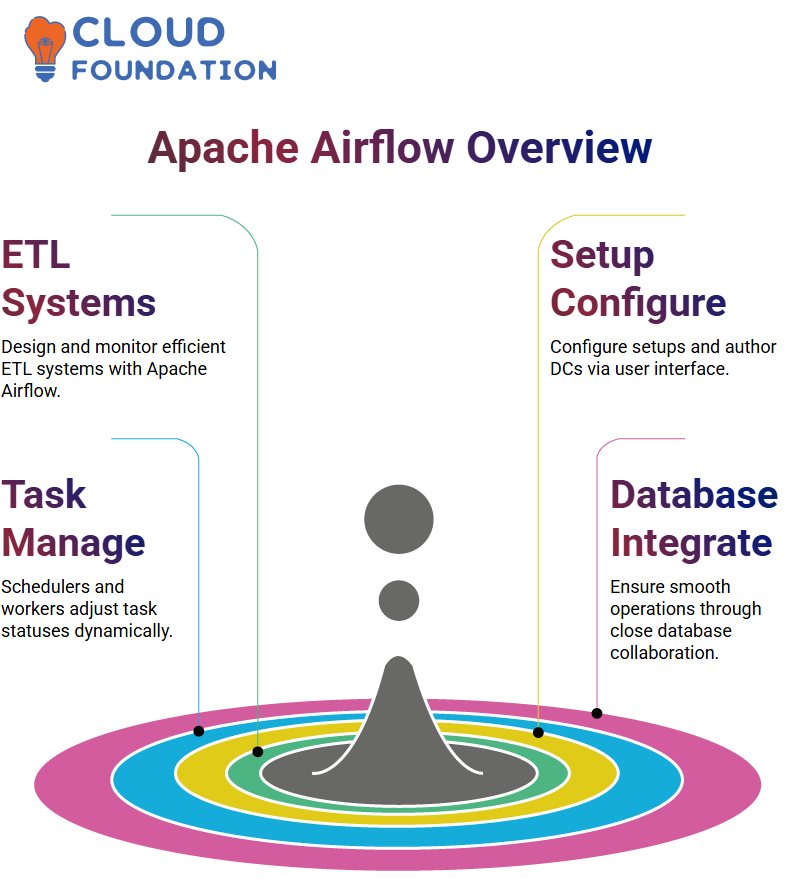Apache Airflow Tutorial
By utilising Apache Airflow principles and features, you can develop an efficient workflow that streamlines operations while increasing overall effectiveness.
Apache Airflows provides a comprehensive view of all stages of the process from start to finish, offering greater insight into the system’s functionality and efficiency.
What is Apache Airflow
Apache Airflow is an efficient tool designed to oversee workflow processes and control them effectively, using Python programming language as its foundation and making use of its features, even without prior coding experience.
Apache Airflow is an open-source platform designed to author data programmatically. Its orchestrator efficiently schedules tasks at specific intervals to produce valuable outputs in their appropriate order and timelines. By connecting its various components, you can build workflows and achieve desired outcomes.
Apache Airflow is an innovative data pipeline management solution with numerous integrations and customisation features. It enables efficient, scalable, and reliable management of data stacks and is ideal for interfacing with data bricks and providers.
Apache Airflow is an invaluable tool for streamlining project workflow and improving communication among different stages. Developers can utilise Apache Airflow’s capabilities to gain more significant insights into the processes involved and increase performance through its various stages and their communication tools.
Features of Apache Airflow
Apache Airflow’s biggest strength lies in its flexibility: you can start small with just a handful of tasks on your computer or grow to include thousands of functions as necessary.
Apache Airflow is an adaptable and customisable platform. It enables users to alter the user interface, add views and functionalities, interact with tools, and complete updates without feeling stuck or frustrated by waiting times.
Apache Airflow’s flexibility enables users to personalize their experience by adding or altering features, and using calendar views to observe patterns over time, monitor workflow and make necessary modifications as they arise.
Apache Airflow is a component that performs specific tasks. Operators should not be mistaken for being similar.

Apache Airflow was intended for batch-oriented workflows, not streaming data pipelines; therefore, if your needs include streaming pipelines, it might be beneficial to consider alternative tools instead. Apache Airflow is essential for scheduling tasks and data efficiently so your workflow runs without interruptions.
What Apache Airflow does?
Apache Airflow is essential to efficiently extracting and transforming data from its various sources, eliminating manual data entry or manipulation and helping mitigate against breaches or security threats. Furthermore, its robust security provides peace of mind that data remains safely stored while remaining easily accessible.
Core components of Apache Airflow
The Web Server: The Web Server serves as the user interface (UI) through which Apache Airflow users may interact with it. They may inspect DAGs through this UI, track task execution, initiate runs, troubleshoot issues, and control its settings—usually via a Flask server running Gunicorn.

The Scheduler: The Scheduler is a daemon process that schedules jobs based on dependencies and execution periods while continually monitoring DAGs. It chooses which duties must be completed at what times and then sends them on to the Executor for completion. It uses Python with multiple threads as its backend process.
The Metadata Database: Apache Airflow stores all of its data for DAGs, tasks, and how they’re carried out, which is essential information for tracking processes, solving issues, or understanding previous runs. PostgreSQL databases are generally preferred; however, MySQL and SQLite may also work.
DAG Page in Apache Airflow
The DAG Page View (or DAG Page) is invaluable for organising and analysing spreadsheet data. Users can quickly switch between running tasks while viewing everything in grid form; its cron expressions help users better navigate the workflow while using tools more effectively.
Microsoft Excel contains numerous tools and features. DAG stands out by acting as the switch on/off button that enables users to toggle between running their schedule and other tasks.
DAGs provide an easy and cost-effective method of notifying Slack whenever tasks fail. Users set notifications when the DAG fails before sending that alert directly into Slack upon task failure.
Trigger DAG
Trigger DAG Operator is an effective way of automating tasks in DAG, making them simpler to create and manage. Utilising Xcops and XCOM, you can achieve a seamless and efficient task completion workflow.
The trigger DAG operator in Python simplifies and synchronises DAG tasks. The video begins by showing how to create free data content using the Branch Python Operator and XCOM.
Utilising the trigger DAG operator simplifies and synchronises tasks within DAG.
Apache Airflow Data engineer
Data engineers are invaluable in designing and monitoring ETL systems like Apache Airflow. This involves configuring its setup and authoring DCs through its user interface; these DCs then become visible to schedulers and workers, allowing them to alter task status at any point during their life cycle.

These components work closely with the database to ensure smooth operations and high performance. Apache Airflow’s key elements come together seamlessly for efficient and dependable operations.
ER diagram
The ER diagram for the meta database illustrates its various tables, with any returned dictionary stored in an XCOM table when returned by functions that return them. Once that task has been accomplished, the branch Python operator comes next, which is called another function, “function Funk.”

Airflow’s official documentation details an ER diagram depicting XCOM as a post table. That means it has its own metadata database storing all necessary metadata; when functions return dictionary collections as output, they store them within this post table.
ETL pipeline
Extracting is gathering data from different sources, such as databases or IoT devices, to process it into something useful, such as tables or lists of items.
The transform process transforms data from its original form into something else, such as a list. Next comes loading, which loads all this new data onto an ETL pipeline, where it is processed further.
ETL pipelines are essential in managing data from various sources such as big data, IoT devices and paid APIs.
Each source could represent one significant data source, while one would represent small IoT device data and another small source that uses paid API services; alternatively, each source might only offer limited amounts.
ETL pipelines allow data processing and storage at scale, such as managing large amounts of information.
Developers can develop robust and efficient ETL pipeline systems to manage and retrieve data from various sources efficiently and quickly, ensuring the organisation always has up-to-date and relevant data available for analysis and processing.
This ensures a continuous data cycle while keeping their information relevant and fresh.
Conclusion
Apache Airflow is an adaptable data processing, management, and automation platform designed for efficient scheduling, tracking, task optimisation, data pipeline building, and management regardless of dataset size.
Apache Airflow simplifies building data pipelines while making scheduling, tracking, and task optimisation straightforward and effective.

DAGs, operators, and the web interface all serve to automate processes, reduce human labor requirements, and enhance system dependability.
Furthermore, this superb application allows data engineers to handle and analyse information from multiple sources.

Vinitha Indhukuri
Author



